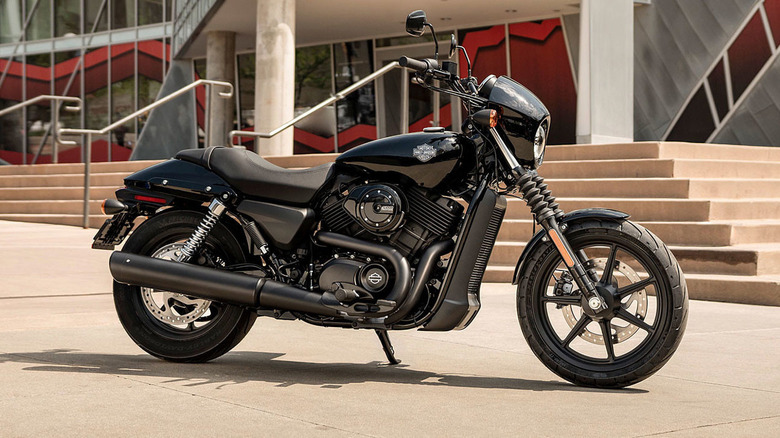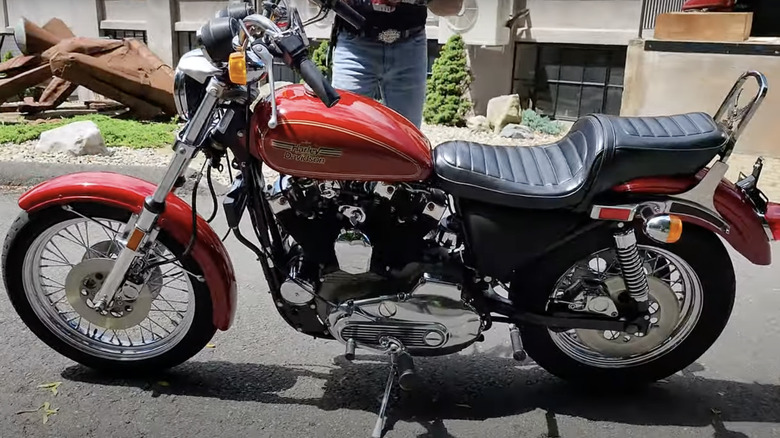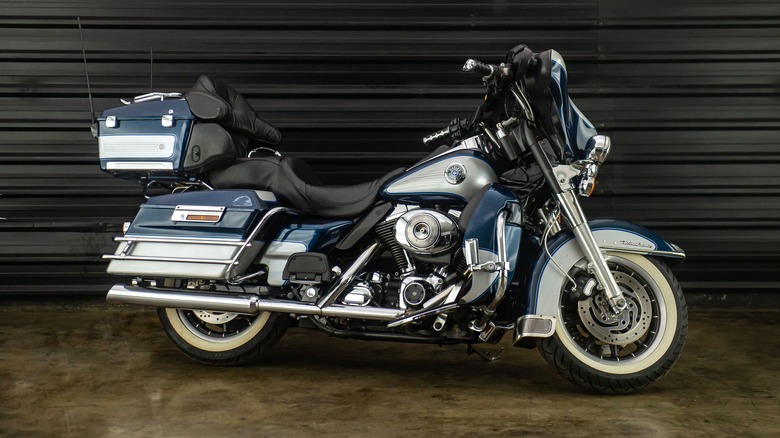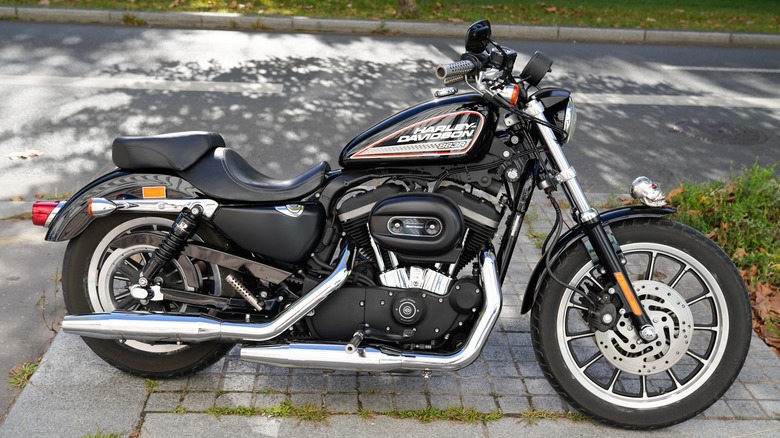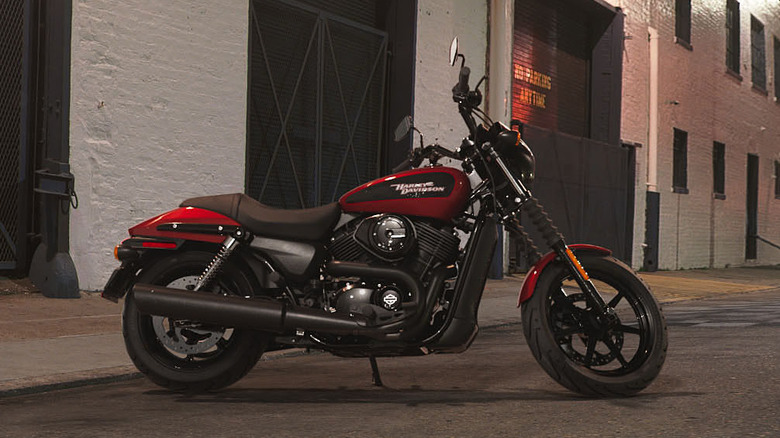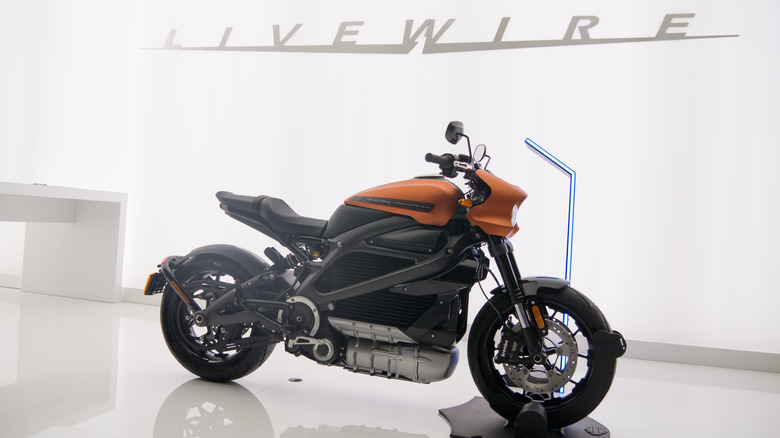5 Harley-Davidson Models We All Love To Hate
William Harley and Arthur Davidson built their first motorcycle in 1903, first working out of Davidson's basement before moving on to a 10 by 15-foot shed in the backyard. They were soon joined by Davidson's brothers William and Walter, and Harley-Davidson has since grown to become the largest motorcycle maker in the United States. The company is now publicly owned and has spread its manufacturing operations around the globe. Its bikes have become a national symbol, even taking several memorable television and movie roles. Harley-Davidson buyers registered almost 350,000 motorcycles worldwide in 2014, but sales hovered between roughly 150,000 and 250,000 units from 2017 through 2022.
Harley's first-quarter profits in 2024 were down 23%, a dip Reuters attributed to high interest rates and declining overall interest in motorcycles. Harley has also produced its share of duds over the years, and the brand has developed an unfavorable reputation among younger buyers who are flocking to more efficient and higher-performing bikes from Japanese and European makers. Harley also faces renewed competition from Indian Motorcycles, its closest rival in the United States. Harley's declining market share is to some degree a self-inflicted wound, though, as the company has produced a handful of models that weren't well-received. Some of these bikes were poorly designed, others were unreliable, and some were just plain unpopular. Here are five such Harley models we all love to hate.
The 1981 Sportster came at the end of the AMF era
Harley-Davidson introduced the Sportster in 1957, and it has since become the brand's best-selling model of all time. The Sportster has generally been an affordable bike that is popular and easy to handle throughout most of its nearly seven decades on the market. However, there are some vintages that are unquestionable down years. For the Sportster, 1981 is generally regarded as one of the worst.
Part of the reason is due to a change in Harley's business model that occurred in the late '60s. At the time, Harley-Davidson was struggling to stay afloat. American Machine and Foundry, better known as AMF, stepped in and bought the brand in 1968. AMF was better known for making tennis rackets and bowling equipment, and its tenure as the custodian of Harley-Davidson is not well regarded.
A group of investors and Davidson's grandson Willie teamed up to buy the brand back from AMF in 1981, but they weren't in time to save that year's Sportster. The model was powered by the notoriously unreliable 997-cc ironhead V-twin engine, which was prone to excessive vibration. Owners also reported issues with the clutch and transmission, and the long fork and top-heavy design earned this model a spot on liveabout.com's list of the 10 worst-handling bikes of all time. On top of all that, the engine produced just 55 horsepower. In comparison, the 1981 Honda CB 750F's four-cylinder engine put out 77 horsepower.
The 2001 Electra Glide Ultra Classic had engine issues
The 2001 Electra Glide Ultra Classic was a striking bike, but that beauty only went fairing, fender, and saddlebag deep. The 1,449cc Twin Cam 88 V-Twin engine was made with short-lived plastic cam tensioners, which could leach shavings into the oil pump, causing engine failure. This model was also subject to a 2004 recall of a faulty main circuit breaker that could cause a sudden and dangerous loss of electrical power. Early Twin Cam 88 engines were also prone to oil leaks, leading to inadequate internal lubrication and grimy exteriors.
These engines also tended to develop crankshaft runout, where the rotation of the shaft deviates from its true centerline. This caused excessive noise and vibration and premature wear to engine internals. Many Twin Cam 88-powered Harleys also developed transmission and stator problems, and the air cooling system was often inadequate in traffic or while idling. Some of these problems were resolved in the Twin Cam 88B engine that debuted in 2002, but that was too late to help the 2001 Ultra Classic. Even if you do an engine swap, you're still left with a nearly 850-pound bike that can be unwieldy in city driving.
The Iron 883 was decidedly mediocre
The Iron 883 might not be Harley-Davidson's worst bike ever, but it has little to distinguish itself. This variant of the Sportster was introduced in 2014 with a price tag of $8,399 (about $11,300 today). The 883cc V-twin put out just 51 horsepower, and Jordan Gibbons of Motorcycle News called the 540-pound lunk "expensive, underpowered, and overweight." Top Speed's Harry Fisher wrote that the Iron 883 had "has some of the worst vibrations of any motorcycle on the market today." He also criticized the stiff suspension and sluggish acceleration, pointing out that the rear cylinder was placed too close to the rider's thighs and produced an excess amount of heat.
Both reviewers reserved a few words of praise for the Iron 883's customizability, and noted that its small size made it perfect for beginning riders. The Iron 883 was discontinued in 2022, though, when Harley phased out the Sportster's Evolution series engine to make room for the new Revolution Max.
Harley traditionalists have lots of criticism for the Street 500 and 750
There might not be a model more offensive to Harley purists than the Street 500, which was introduced alongside the Street 750 in 2014. Brand loyalists rejected the move from liquid to air cooling and the abandonment of Harley's traditional pushrod architecture. The smaller engines were targeted to younger buyers, but Harley's core baby boomer audience rejected their lack of low-end torque and throaty rumble. Harley CEO told Ride Apart that the new models were made "for people who want to identify with a brand but have a motorcycle that is less intimidating, and more inviting."
That entry-level friendliness made the plain-Jane Street 500 and 750 popular with riding schools, but the small and agile Street models never caught on with the Harley faithful. The fault may lie primarily with a demographic that is notoriously unwilling to adapt, though even younger riders were disappointed in the build quality and reliability of the Street 500 and 750. British rider Stephen Bush commented on a Youmotorcycle.com forum post that "the fit and finish was cheap and nasty, and the handling was very poor." Harley-Davidson heard the echoes of these complaints and dropped the Street line in 2021.
The Livewire was one step too far for many Harley fans
If the old-school heads were bothered by the disruption to tradition represented by the Street line, they were absolutely enraged when Harley went electric with the Project Livewire. The battery-powered bike was released as a prototype in 2014, and went into production five years later. Even some of the most open-minded and environmentally conscious Hogheads were put off by the Project Livewire's nearly $30,000 sticker price and limited range. Harley introduced the Livewire One in 2022 with a more manageable price of $21,999, right about the time it split Livewire off into its own company.
The latest Livewire bike, the S2 Del Mar, came out in 2023 with a price tag of $15,999 and a range of up to 113 miles in city cruising. On the highway, though, its range drops to a less useful 70 to 86 miles. After riding the S2 Del Mar last summer, SlashGear's Justin Owen acknowledged that it was a step forward. "Harley has put a lot of investment and resources into getting this right, at least, after first getting it wrong," he wrote.
Livewire bikes are aimed at city commuters, but a serious improvement in highway cruising range might win some loyalists over. That said, dedicating development efforts to changing the minds of dinosaurs who won't give up their internal combustion engines might be a losing battle.
